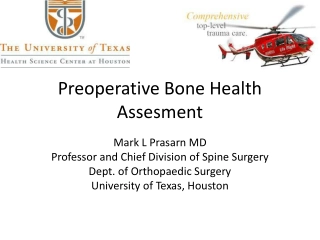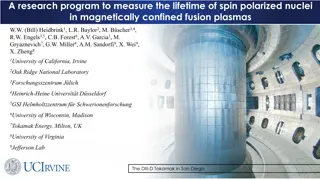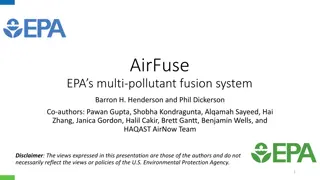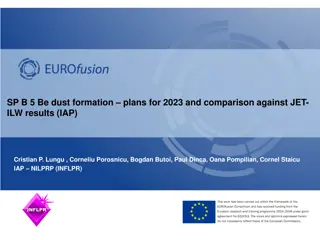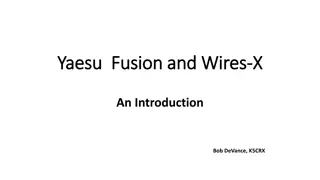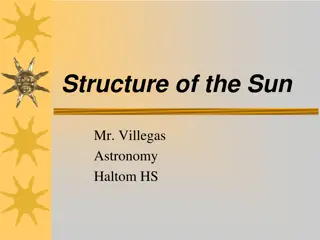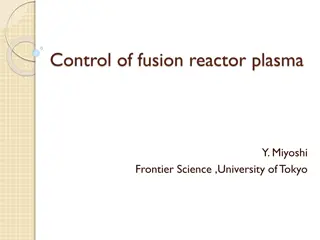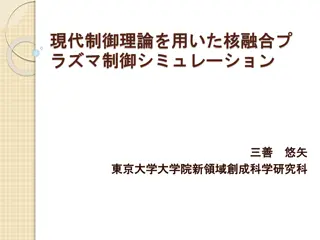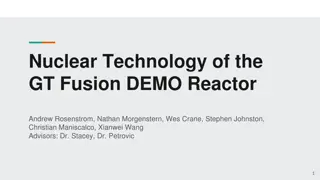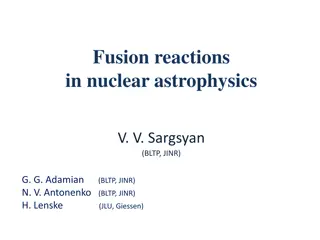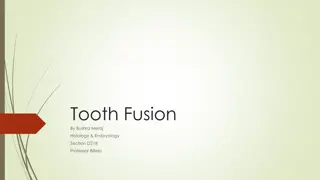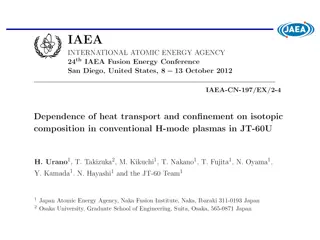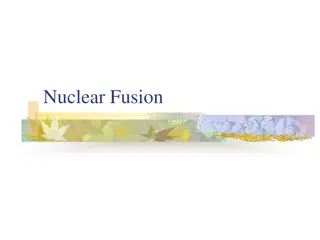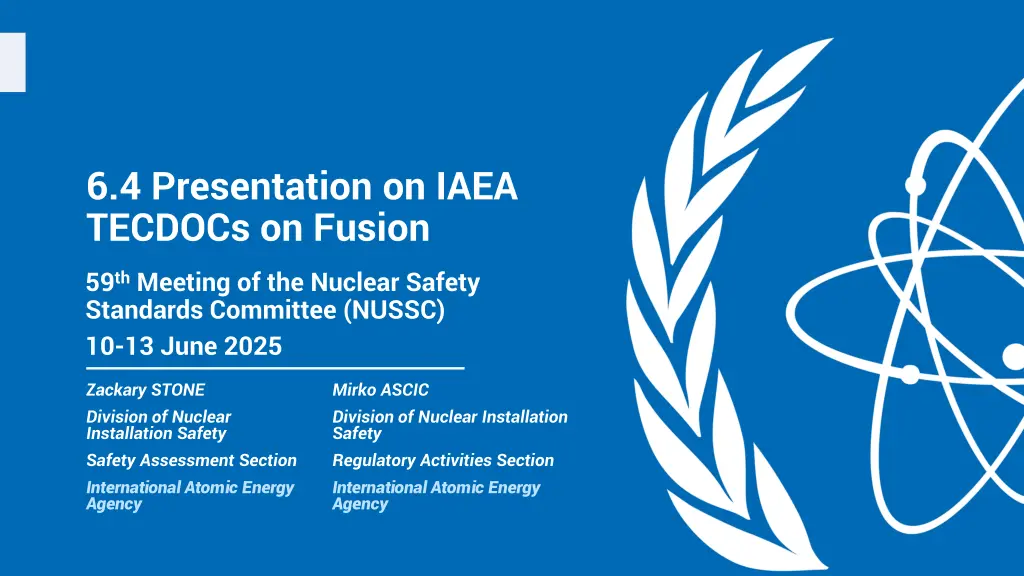
IAEA TECDOCs on Fusion for Safety Standards Committee Meeting
Explore IAEA's involvement in fusion energy development through TECDOC publications, focusing on safety considerations for fusion power plants. Learn about experiences, definitions, and information gathered to improve safety standards in the fusion industry.
Download Presentation

Please find below an Image/Link to download the presentation.
The content on the website is provided AS IS for your information and personal use only. It may not be sold, licensed, or shared on other websites without obtaining consent from the author. If you encounter any issues during the download, it is possible that the publisher has removed the file from their server.
You are allowed to download the files provided on this website for personal or commercial use, subject to the condition that they are used lawfully. All files are the property of their respective owners.
The content on the website is provided AS IS for your information and personal use only. It may not be sold, licensed, or shared on other websites without obtaining consent from the author.
E N D
Presentation Transcript
6.4 Presentation on IAEA TECDOCs on Fusion 59thMeeting of the Nuclear Safety Standards Committee (NUSSC) 10-13 June 2025 Zackary STONE Division of Nuclear Installation Safety Safety Assessment Section International Atomic Energy Agency Mirko ASCIC Division of Nuclear Installation Safety Regulatory Activities Section International Atomic Energy Agency
Background IAEA is very involved with a broad range of fusion-related activities to support the scientific, technological, and regulatory development of fusion energy o Fusion Energy Conference (FEC), technical meetings, and workshops Currently there is an acceleration of the development and deployment of fusion Safe, secure designs are essential for the successful deployment of fusion power plants and to protect people and the environment
TECDOC-2076 Experiences for Consideration in Fusion Power Plant Design Safety and Safety Assessment Published 2024 Objectives Provides insights into how safety may be addressed for prototype, demonstration or commercial fusion power plants (referred to as fusion power plants) Captured safety approaches from a range of currently operating and planned experimental fusion facilities, as well as those approaches under development Aims to improve the general understanding of the safety considerations for fusion power plants and assist in informing the need for fusion-specific design safety and safety assessment safety standards A screen shot of a phone Description automatically generated
Scope Definitions for this publication: Fusion facility: A fusion facility is any facility making use of fusion reactions Fusion power plant: A fusion power plant is any prototype, demonstration or commercial fusion facility for energy production Information for this TECDOC was gathered based on questionnaire responses and experts experience which covered: Safety approaches in current and planned fusion facilities Design safety principles and assessment methodologies Internal and external hazards, accident scenarios, and defence-in-depth strategies Information learned from ITER and JET
IAEA Fundamental Safety Principles The fundamental safety objective is to protect people and the environment from harmful effects of ionizing radiation. 2.1. This fundamental safety objective of protecting people -individually and collectively -and the environment has to be achieved without unduly limiting the operation of facilities or the conduct of activities that give rise to radiation risks. To ensure that facilities are operated and activities conducted so as to achieve the highest standards of safety that can reasonably be achieved, measures have to be taken: a) To control the radiation exposure of people and the release of radioactive material to the environment; b) To restrict the likelihood of events that might lead to a loss of control over a nuclear reactor core, nuclear chain reaction, radioactive source or any other source of radiation; c) To mitigate the consequences of such events if they were to occur.
Applicability of SF-1 to FPPs The fundamental safety objective applies to all circumstances that give rise to radiation risks. The safety principles are applicable, as relevant, throughout the entire lifetime of all facilities and activities (existing and new) utilized for peaceful purposes, and to protective actions to reduce existing radiation risks and therefore, SF-1 is applicable to FPPs (and fusion facilities) Additionally, the ten safety principles established in SF-1 are applicable to FPPs, however the measures taken when applying these principles may differ
Fusion Power Plants Concepts for FPPs based on a diverse range of technologies have been proposed by national laboratories and private companies, with most of them oriented to the production of energy Some key characteristics of the different approaches are the fuels, plasma confinement technology and operation mode (i.e. continuous or pulsed); however, there are many other design options that can have an impact on safety (material selection, coolant choice, size and power of fusion device) The key radiological hazards relating to the public and environment will be due to the fusion fuel/reaction selection (tritium inventory) and related material activation from neutron irradiation
General Considerations for Safety No potential for runaway chain reactions o Inherent safety feature of fusion devices is that departures from normal conditions tend to cause the fusion reaction to cease or substantially degrade Small amount of fuel within the vacuum vessel o To maintain the fusion reaction, precise control of fuel mix and density is required Generation of decay heat o Most of the decay heat arises from activated materials, particularly in plasma-facing materials (dependant on material selection and neutron fluence) o Accident scenarios where the decay heat removal function is impacted, the buildup of heat could cause damage to confinement barriers and other systems Reaction vessel operations under a vacuum o Eliminates some hazards related to higher pressures but some FPP concepts include pressure suppression systems to mitigate overpressure in the vacuum vessel and control the mobilization of radioactive material within the vacuum vessel
Summary of the Commonalities and Differences in Approaches to Design Safety and Safety Assessment Radiological Acceptance Criteria Safety Assessment Tools Fundamental Safety Functions Plant State Categories Defence-in-Depth Equipment Qualification
TECDOC- International Experience in the Regulation of Fusion Facilities Insights from International Experience Compiles fusion regulation challenges and strategies Reinforces IAEA s role in fostering global collaboration on fusion Helps set the stage for potential development of fusion safety standards in the future
Current Fusion Regulatory Landscape Diverse National Practices and Shared Challenges in Fusion Regulation Global practices in TECDOC captured from these countries: Canada China France Germany Japan Republic of Korea Russia UK United States
Current Fusion Regulatory Landscape Shared Challenges in Fusion Regulation Adapting fission-focused frameworks to account for fusion s unique risks. Limited lifecycle experience with fusion facilities. Lack of fusion-specific regulatory guidance. Need for graded approaches tailored to facility types and risks. Importance of stakeholder and public engagement to close regulatory gaps.
Key Considerations Suggested Areas of Focus Current State of Knowledge National and International Alignment Terminology and Definitions Graded Approach Applied to Regulatory Framework Authorisation Strategies Development of Implementing Guidance Regulator Agility
Conclusion Tailored regulatory frameworks for fusion. Needed to address the unique characteristics of fusion technologies. Stakeholder engagement is critical. Successful regulation aided by engagement between developers and regulators. Regulatory agility. Adapting to technological advancements ensures safety and innovation can coexist. Global Harmonization. Support unified global efforts to develop consistent and harmonized fusion regulatory standards.
Development of Safety Report Safety and Regulation Considerations for Fusion Facilities Objectives Explains how the Fundamental Safety Principles and General Safety Requirements apply to fusion facilities. Discusses key safety and regulatory aspects, drawing from the IAEA Safety Standards, and provides discussion on how these aspects apply or could be applied to fusion facilities. Expected that feedback on this publication could be used to inform the process of developing Safety Standards on fusion to consolidate approaches that could be later harmonized and facilitate consensus. xx Safety and Regulation Considerations for Fusion Facilities
Background The process to develop the TECDOC-2076 highlighted the challenge in presenting information relevant for the safety of FPPs as there were no FPPs under construction or in operation at the time of writing, and those being proposed were at an early stage of design. It was suggested that future work in this area should consider a broader set of fusion facilities that includes experimental devices on the pathway to FPPs, which may lead to better insights and prove more relevance for near-term fusion facilities.
Scope The considerations in this publication cover all fusion facilities. This would include all types of facilities designed to achieve fusion reactions, whether experimental, prototype, demonstration or commercial, excluding fission- fusion hybrids. The term fusion facility includes the fusion device, supporting systems such as heat removal, tritium breeding and handling (where relevant) and magnets, as well as radioactive waste handling and active maintenance areas.
Safety Report Topics General Safety and Regulatory Considerations for Fusion Facilities (Graded approach, defence in depth) Regulatory Supervision Management and Verification of Safety Site Characteristics and Evaluation for Site Selection Design Safety Safety Assessment Construction and Commissioning Operation Management of Radioactive Waste and Decommissioning
Ensuring IAEA Safety Standards fully applicable to Fusion Power Plants Collect Member States experiences in particular aspects of fusion facilities by developing TECDOCs on regulating, design safety and safety assessment. Collect Member States proposals in a Safety Report presenting approaches that could be later harmonized and facilitate consensus. Propose and develop goal setting Specific Safety Requirements and Safety Guides for fusion facilities to enable the deployment of fusion facilities with a highest level of safety that can reasonably be achieved.
Key Points from Fusion Technical Meeting Fusion is not fission however, SF-1 still applies to fusion o Protecting people and environment from harmful effects of ionizing radiation is priority Significant Acceleration in Private Investment & Commercial Timelines o Utilizing different technology Vast differences in how safety and regulations of fusion is being approached by Member States Incorporate lessons learned into Safety Report Future IAEA fusion specific requirements may be needed
Thank you! Z.Stone@iaea.org M.Ascic@iaea.org

